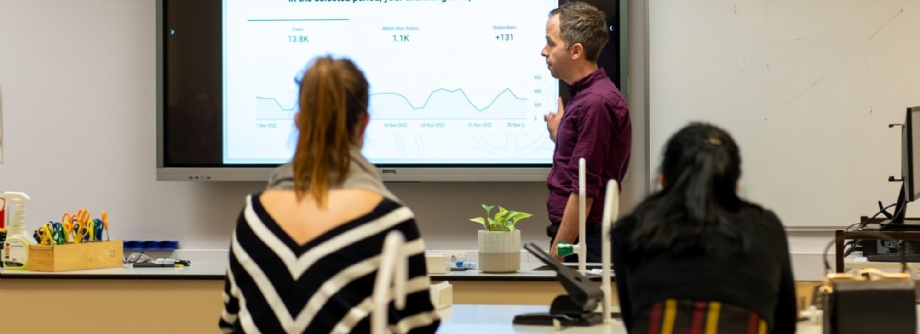Staff Blog // Using YouTube to Boost Student Attainment

This blog is based on a recent session delivered at the Girls’ Learning Trust Staff Conference 2023 by Stuart Godman (Carshalton High School for Girls).
At the Girls’ Learning Trust Conference, I shared the expertise which the History Department at Carshalton High School for Girls has acquired from creating a bespoke YouTube channel to boost student attainment. Our channel has almost 2,000 subscribers watching content created by our team, receiving 500-900 hits per week and many more at pinch points during the year, like examination periods. The conference session focused on what we’ve learned about what students want from a channel.
Our channel purposes have developed over time. We set it up in 2019 in order to reach Year 11 students with intervention before GCSE History exams. Having noticed that in-person sessions held before school were not consistently well-attended by students most in need of additional guidance, we needed a better way of reaching our audience. By putting sessions on YouTube, we could reach key groups of students at their convenience and thus the channel was born.
Upon creation, we had no idea how valuable the channel would be during the pandemic as an excellent platform for asynchronous learning. Not only did our bank of content increase substantially, but the nature of our materials shifted too, away from recorded intervention sessions towards instructional videos with specialists delivering exposition on specific areas of content. As students returned to classrooms following the pandemic, their feedback showed the channel was valued as a source of subject and disciplinary knowledge. Our next mission was to increase our content. Now, the channel is our students’ number one destination for revision. After receiving over 16k hits in one day alone during last summer’s exam season, we know a many students across the country also access our content.
We also know what our audience is looking for, thanks in part to YouTube’s analytics facility, which allows us to analyse audience behaviour on several metrics including which videos are watched and how long for. We’ve discovered consistency across content really matters, so we produce four types or ‘genres’ of video. Our ‘overview’ videos zoom out on the curriculum, presenting broad brush narratives over large sweeps of time, following a theme such as medieval medicine. These are complemented by ‘spotlight’ videos zooming in on shorter periods, presenting content in depth, like the evacuation of casualties in the British sector of the Western Front. The third strand of content comprises ‘Technique’ videos exemplifying how top-quality answers are constructed through subject experts articulating their thought processes as they create model answers. Finally, student voice indicated a demand for short videos targeting specific events, thus our ‘rapid revision’ videos were born. These amount to detailed bursts of content knowledge just five minutes long.
We are convinced of the huge gains from investing in creating a YouTube channel. Enabling students to access high-quality exposition from their teachers is incredibly powerful, as is the facility for them to re-watch, slow down and subtitle content. Staff benefit too, with the option to watch previously created content in order to boost subject knowledge or to embed channel content into lessons when setting cover. As a Head of Department, I have witnessed the channel’s power to improve consistency in the way staff coach students to improve examination technique, eliminating variation between delivery of such technique across classrooms. Parents benefit too from having access to the knowledge base of the subject.
Developing a channel is not a quick fix. Producing high quality content and narrating with precision is an investment of time but has potential for huge gains. Departments starting to develop their own YouTube channels, might consider these points:
- Prioritise the content to be created. Target knowledge most heavily weighted in exams, or areas where students struggle most.
- Align video content with your knowledge base. Make sure it ties does not contradict the workbook or textbook used in class.
- Reduce cognitive load by chunking content, structuring it and removing excess words, animations and images. Dual code where possible, including memorable images to accompany text.
- Add value with narration. Don’t just read the slides, add explanation and hinterland knowledge.
- Get everybody involved in producing content: This is an excellent opportunity for staff CPD and raises the profile of all departmental staff with students.
- Standardise the formats of your videos. Student motivation is better when they see time has been invested in producing consistently high quality materials.
- Watch your timing: We recommend 15 minutes as the maximum for a YouTube video. 5-10 minutes is probably ideal.
- Intersperse exposition with retrieval. Prompt students to pause the video and recreate content just viewed, thereby implementing Mayer’s guidance that encoding material into the long-term memory requires some form of generative task
Stuart Godman
Carshalton High School For Girls
